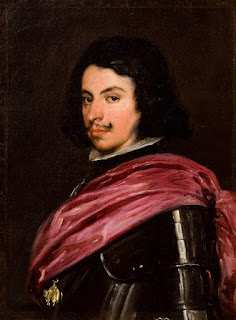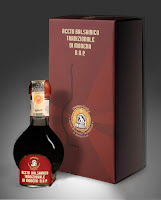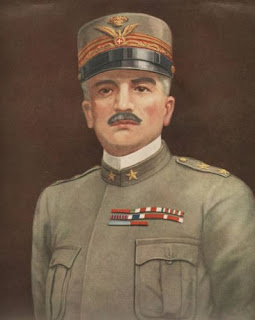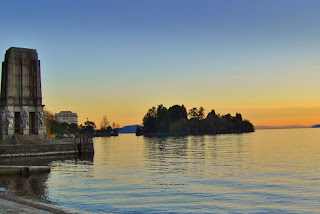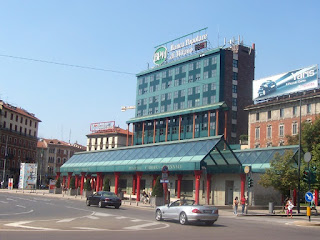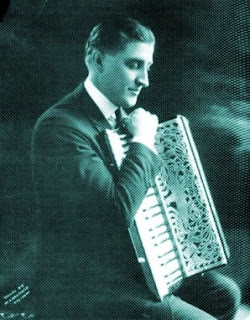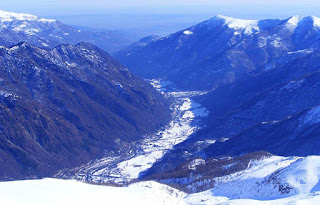When the Pope was slapped down by a disgruntled landowner
 |
| Boniface VIII had a long-running conflict with Philip IV of France |
An army, representing King Philip IV of France and the
anti-papal Colonna family, entered Anagni in Lazio and captured Pope Boniface
VIII inside his own palace on this day in 1303.
The Pope was kept in custody for three days and was
physically ill-treated by his captors until the local people rose up against
the invaders and rescued him.
Boniface VIII returned to Rome, but he was physically and
mentally broken after his ordeal and died a month later.
The Pope had been born Benedetto Caetani in Anagni in 1230.
He became Pope Boniface VIII in 1294 after his predecessor abdicated. He
organised the first Catholic Jubilee Year to take place in Rome in 1300 and
founded Sapienza University in the city in 1303, the year of his death.
But Boniface VIII is mainly remembered for his conflicts
with Philip IV of France. In 1296 Boniface VIII issued the bull Clericis Laicos
which forbade under the sanction of automatic excommunication any imposition of
taxes on the clergy without express licence by the Pope. Then in 1302 he issued
a bull proclaiming the primacy of the Pope and insisting on the submission of
the temporal to the spiritual power.
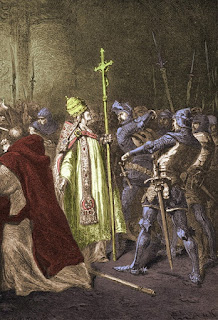 |
| The 'Anagni slap' as depicted by French artist Alphonse de Neuville |
Philip IV countered this with an order forbidding all
exports of money and valuables from France to the Papal States along with the
expulsion of foreign merchants.
The squabble escalated until Boniface VIII excommunicated
the King of France and released a decree stating that every human creature was
subject to the Roman pontiff.
He sent mercenaries to destroy other people’s castles and
declared the anti-papal Colonna family’s property forfeited. He then shared
their land out among his own family members.
An army representing the powerful Colonna family and
accompanied by Guillaume de Nogaret, Philip IV’s minister, marched into Anagni
where the Pope was spending the summer at his palace. They kidnapped the Pope
and demanded that he abdicate.
When he refused he was allegedly slapped by Sciarra Colonna,
which famously became known as the 'Anagni slap' - lo schiaffo di Anagni. The
Colonna family wanted to kill the Pope but de Nogaret wanted to take him to
France to try him for his crimes in front of a General Council.
According to many accounts Boniface VIII was subjected to
ill-treatment over a period of three days until he was rescued by local people.
He survived the attack only to die a month later after he had returned to Rome.
The writer Dante Alighieri had been personally exiled by the Pope
for supporting the limitation of papal powers, so when he wrote his Divine
Comedy he had his revenge by placing Boniface VIII in hell.
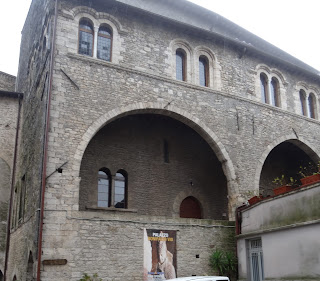 |
| Boniface's papal palace in Anagni |
Travel tip:
Anagni is an ancient town in the province of Frosinone in
Lazio. It is south east of Rome in an area known as Ciociaria, named after the primitive footwear, named ciocie, favoured for many years by people living in the area. Boniface VIII was the fourth Pope produced
by Anagni but after his death the power of the town declined and the papal
court was transferred to Avignon. The medieval Palace of Boniface VIII, where
he received the Anagni slap, is near the Cathedral. Close by there is a restaurant named Lo
Schiaffo.
 |
| Part of the Giotto fresco commemorating the Jubilee |
Travel tip:
The Papal Archbasilica of San Giovanni in Laterano in Rome
houses a small portion of a fresco cycle painted by Giotto for the
Jubilee of 1300, called by Pope Boniface VIII after he was elected to the
Papacy.
